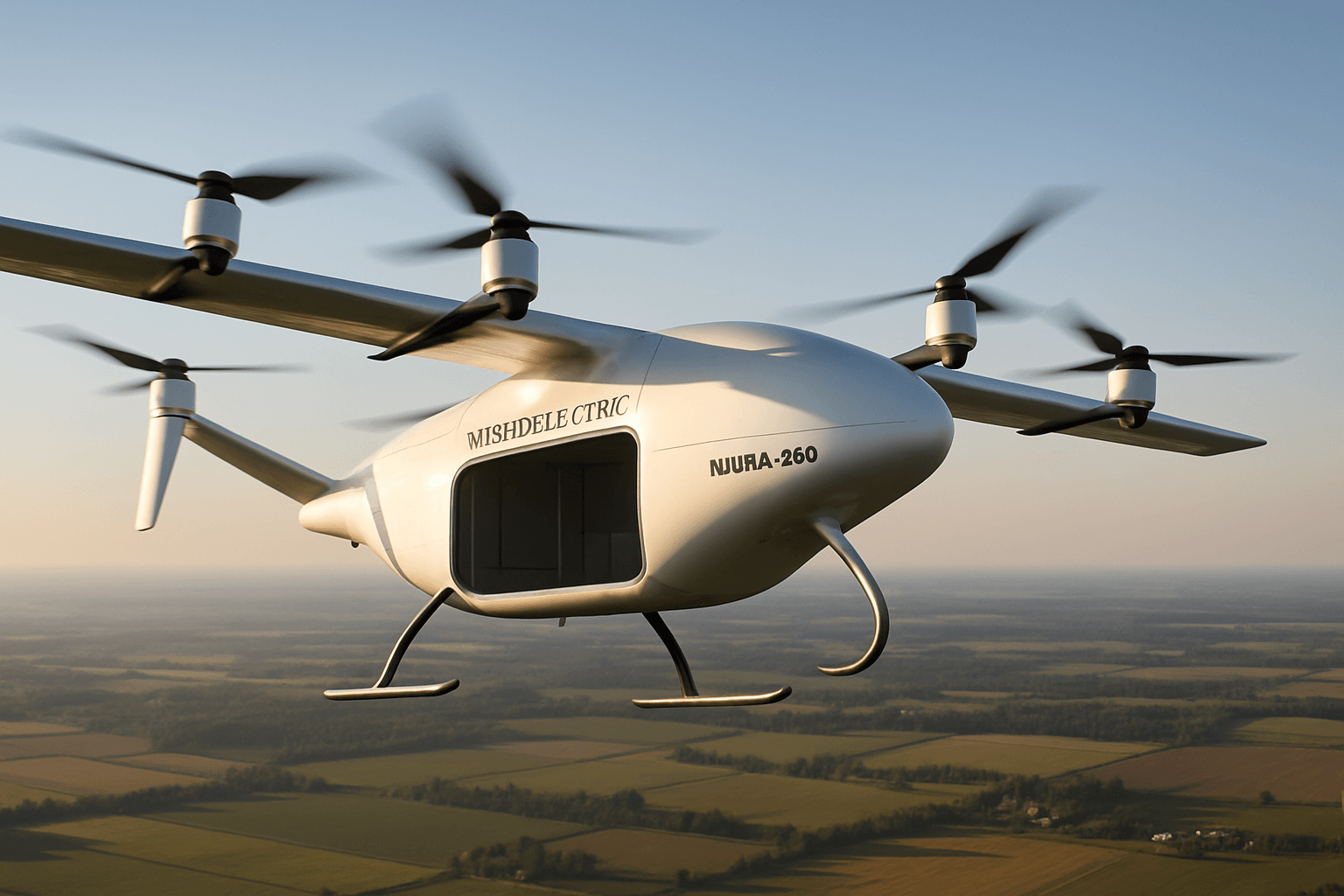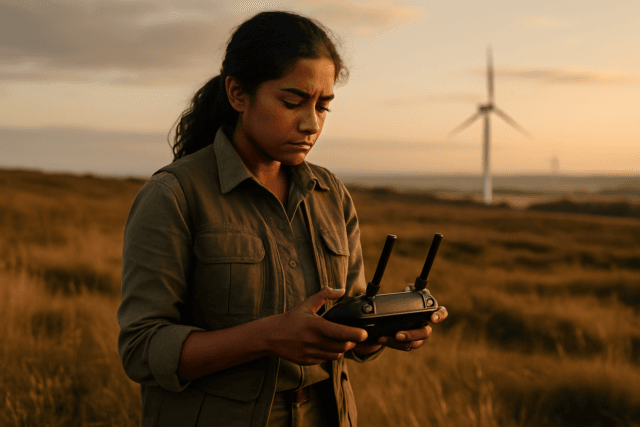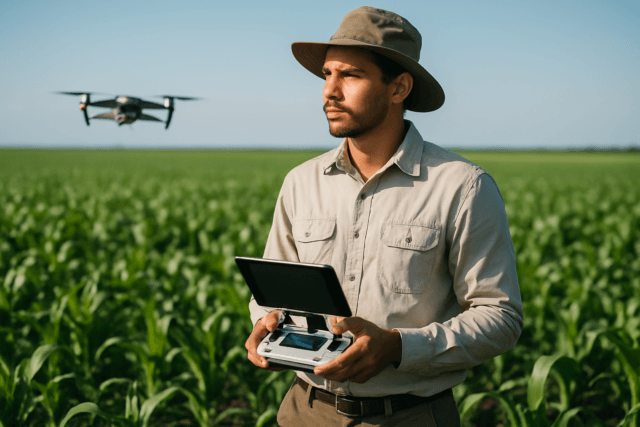In a significant stride for unmanned aerial logistics, Pipistrel, a Textron company, has announced the successful first flight of its Nuuva V300 hybrid-electric cargo drone. This marks a pivotal moment in the development of advanced, sustainable, and versatile unmanned aerial systems (UAS). The Nuuva V300 is poised to transform the cargo delivery landscape with its long-range capabilities, substantial payload capacity, and eco-friendly design.
What is the Nuuva V300?
The Nuuva V300 is a revolutionary long-range, large-capacity, heavy-weight autonomous eVTOL (electric Vertical Take-Off and Landing) UAV designed for logistics and aerial cargo delivery. This unmanned aircraft combines the best of both airplane and helicopter principles by using eight electric motors for vertical take-off and landing, and a separate internal combustion engine for forward flight.
Pipistrel’s venture into the eVTOL air cargo market leverages the knowledge gained from their sister 801 eVTOL project. The Nuuva V300 stands out with its potential to operate ten times more economically than today’s helicopters, eliminate the need for runways, and enhance safety and reliability using Pipistrel’s type-certified electric engines.
Key Features and Specifications
The Pipistrel Nuuva V300 boasts impressive specifications that position it uniquely in the cargo VTOL market:
- Hybrid-Electric Powertrain: Combines battery-powered electric motors for VTOL with an internal combustion engine for cruise flight, optimizing efficiency and range.
- Vertical Take-Off and Landing (VTOL): Operates from prepared or unimproved surfaces, eliminating the need for runways.
- Remote Piloting & BVLOS: Remotely piloted with a fly-by-wire flight control system, and equipped with automatic Beyond Visual Line of Sight (BVLOS) flight capabilities.
- Payload Capacity:
- Typical mission payload weight: 300 kg (661 lb)
- Maximum payload weight: 460 kg (1,014 lb)
- Cargo Volume: 3 m3 (106 ft3), capable of holding 3 Euro Pallets (EPAL) or loose cargo.
- Range:
- Typical mission range: 300 km (186 miles) with a 300 kg payload
- Maximum range: Up to 2,500 km (1,553 miles) with a lighter payload
- Speed:
- Economy cruise speed: 165 km/h (103 mph)
- Fast cruise speed: 220 km/h (137 mph)
- Altitude: Maximum altitude of 2,438 m (8,000 ft)
- Engines:
- 8 Pipistrel E-811 electric motors for VTOL
- 1 High-efficiency FADEC engine with battery packs for forward flight
- Wingspan: 13.2 m (43 ft 4 in)
- Length: 11.3 m (37 ft 1 in)
- Height: 3.1 m (10 ft 2 in)
- Max Takeoff Weight: 1,700 kg (3,750 lb)
Design and Development
The Nuuva V300 features a distinctive tandem wing design, with the rear wing having a larger wingspan than the front. These wings are connected to a fuselage with a large front door for accessing the cargo hold. Booms on each side support eight electric engines for vertical propulsion, each turning a two-blade propeller.
Honeywell provides a triple-redundant fly-by-wire system for autonomous flight control, while Textron Systems has developed the ground control station for remote operation.
The First Flight
On January 31, 2025, Pipistrel announced the successful first hover flight of the Nuuva V300 in Gorizia, Italy. This achievement signifies a major step forward in the aircraft’s development and validates Pipistrel’s expertise in electric propulsion and autonomous flight technology.
A second prototype is slated to join the flight test program in 2025 to further evaluate the aircraft’s performance and secure regulatory certifications.
Applications and Market Potential
The Nuuva V300 targets the middle-mile logistics market, bridging the gap between long-haul transportation and last-mile delivery. Its unique capabilities make it suitable for various applications:
- Cargo Delivery: Efficiently transport goods to locations inaccessible by traditional aircraft or ground vehicles.
- Search and Rescue: Rapidly deploy equipment and supplies in emergency situations.
- Humanitarian Aid: Deliver essential resources to disaster-stricken areas.
- Disaster Relief: Provide support and supplies to affected communities.
- Ship-to-Shore Deliveries: Transport goods between ships and coastal facilities.
- Medical Supply Transportation: Deliver critical medical supplies and equipment to remote or underserved areas.
The cargo drone market is experiencing substantial growth, driven by the increasing demand for faster delivery, improved efficiency, and cost-effective logistics solutions. According to a recent report, the global cargo drones market is projected to reach USD 8.92 billion by 2030, growing at a CAGR of 34.2% from USD 1.53 billion in 2024.
Advantages of the Nuuva V300
The Nuuva V300 offers several advantages over traditional cargo transportation methods:
- Cost Efficiency: Operates at a fraction of the cost of helicopters, making it an economically viable option for various missions.
- Environmental Friendliness: Reduces carbon emissions compared to traditional aircraft, contributing to a more sustainable aviation industry.
- Flexibility: Can be optimized for different mission profiles, trading off payload capacity for extended range or vice versa.
- Accessibility: Vertical takeoff and landing capability allows operation from confined spaces and unprepared surfaces.
- Safety and Reliability: Employs distributed electric propulsion (DEP) for redundancy and enhanced safety.
- Automation: Autonomous flight capabilities reduce operational costs and improve efficiency.
Competition
The cargo drone market is becoming increasingly competitive, with several companies developing innovative solutions for aerial logistics. Some of the key competitors of Pipistrel in this space include:
- Dronamics (UK)
- Volocopter GmbH (Germany)
- Ehang Holdings Ltd (China)
- Sabrewing Aircraft Company (US)
- Elroy Air (US)
- Silent Arrow (US)
- Drone Delivery Canada Corp. (Canada)
- FlyingBasket (Italy)
These companies offer a range of cargo drones with varying payload capacities, ranges, and operational capabilities. Pipistrel’s Nuuva V300 stands out with its unique hybrid-electric powertrain, long-range capability, and focus on middle-mile logistics.
The Future of Cargo Drones
The successful first flight of the Nuuva V300 represents a significant milestone in the evolution of cargo drones. As technology advances and regulations evolve, these unmanned aircraft are poised to play an increasingly important role in the global supply chain.
The Nuuva V300’s innovative design, impressive specifications, and versatile capabilities position it as a leader in the emerging cargo drone market. With continued development and testing, Pipistrel’s Nuuva V300 is set to revolutionize the way goods are transported, offering a faster, more efficient, and more sustainable solution for logistics operations worldwide.





